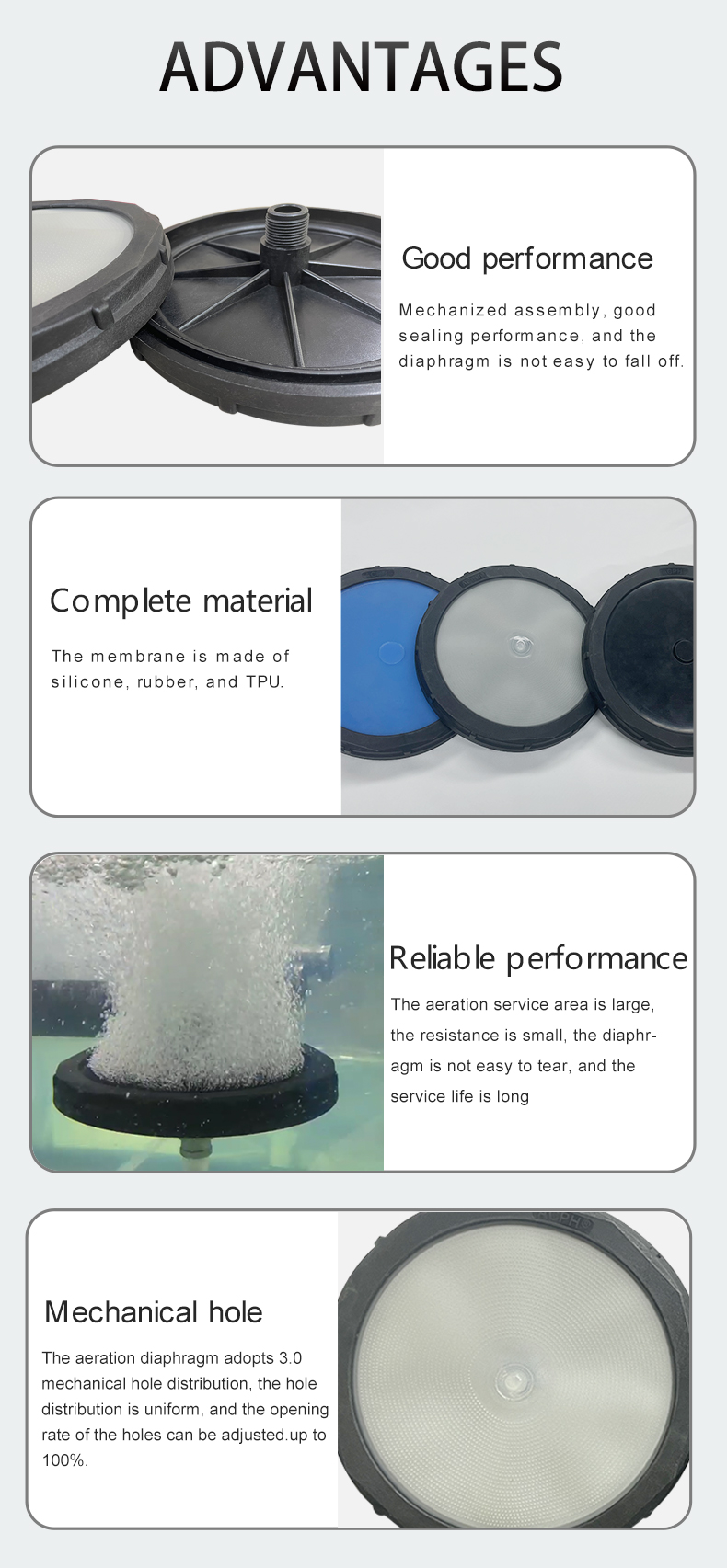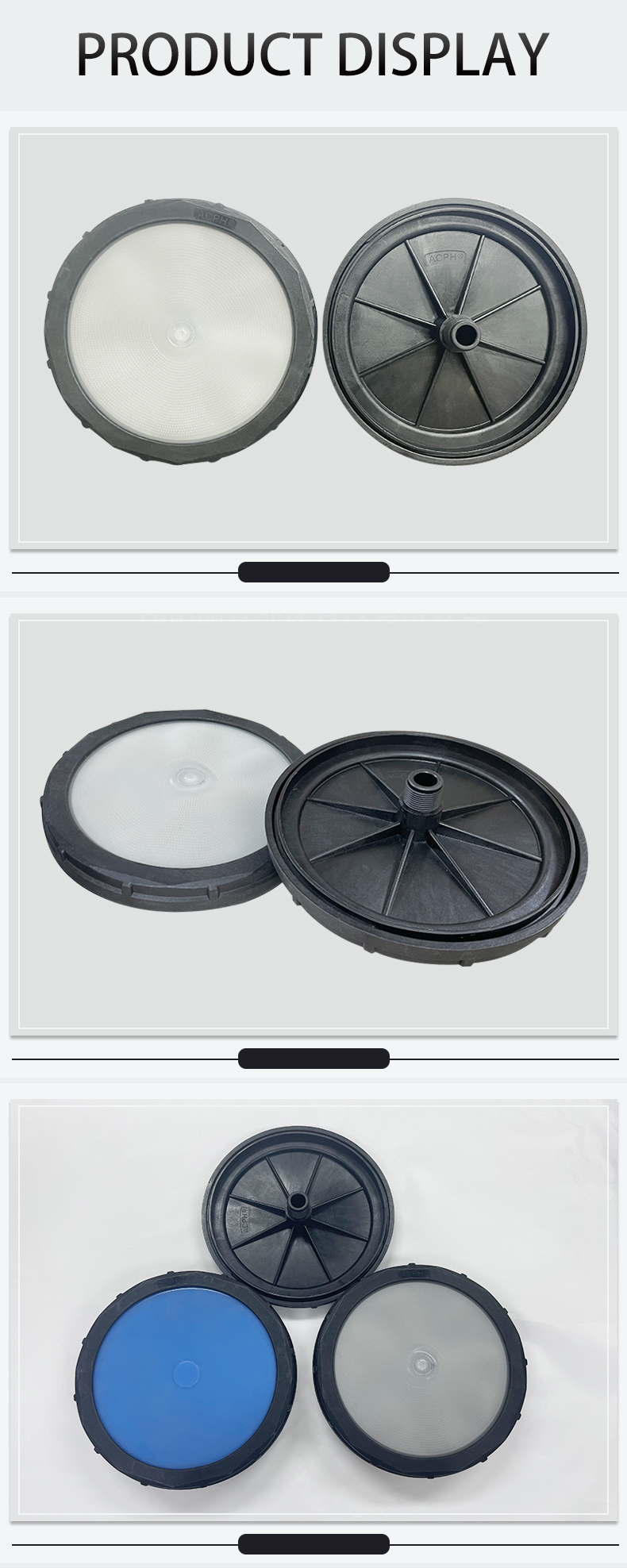Copyright © Kunshan Pinhong EPT Co.,Ltd All rights reserved. Site Map Designed by iwonder.cn

During aeration, microorganisms absorb dissolved oxygen from the air-liquid interface of the bubbles. Under aerobic conditions, these microorganisms carry out respiratory metabolism, breaking down organic substances present in the wastewater into harmless by-products, simultaneously releasing carbon dioxide and water. This process is known as biological oxidation or biodegradation
Description

The working principle of the TPU Disc Diffuser is based on gas transfer and bubble formation. In an aeration system, compressed air is transported through pipes to the aeration disc. As the compressed air enters the interior of the aeration disc, the gas pressure inside the disc becomes higher than the gas pressure in the surrounding water. Consequently, the gas starts to escape through the small holes on the aeration disc's surface, creating a multitude of tiny bubbles.

Aeration System Design: The design of the aeration system, including the type of aeration discs used, the layout, and the density, directly affects energy consumption. Efficiently designed aeration systems can reduce energy requirements while maintaining treatment performance.
Oxygen Transfer Efficiency: The efficiency with which the aeration discs transfer oxygen into the water impacts the energy consumption. Higher oxygen transfer efficiency reduces the amount of air needed for aeration, leading to energy savings.
Wastewater Characteristics: The characteristics of the wastewater, such as its organic content and temperature, influence the oxygen demand and, consequently, the energy required for aeration.
Treatment Objectives: The treatment objectives, such as organic matter removal or nitrification, dictate the required level of aeration and, in turn, affect energy consumption.
Operating Conditions: Factors such as the dissolved oxygen setpoint, aeration rate, and operating hours can influence the overall energy usage in the aeration process.

